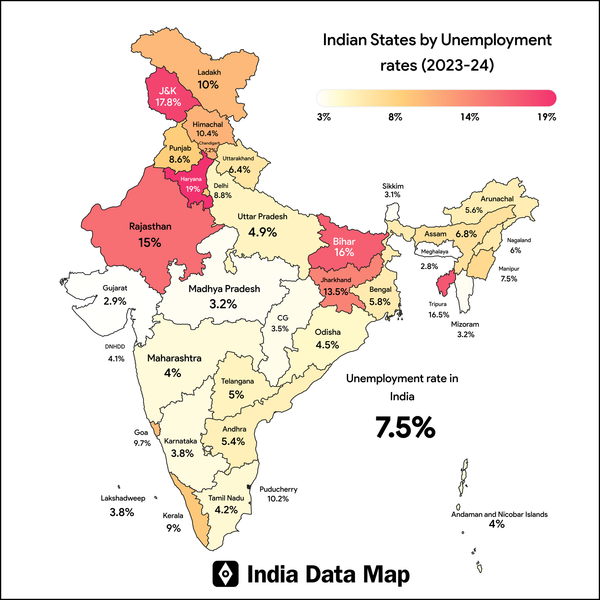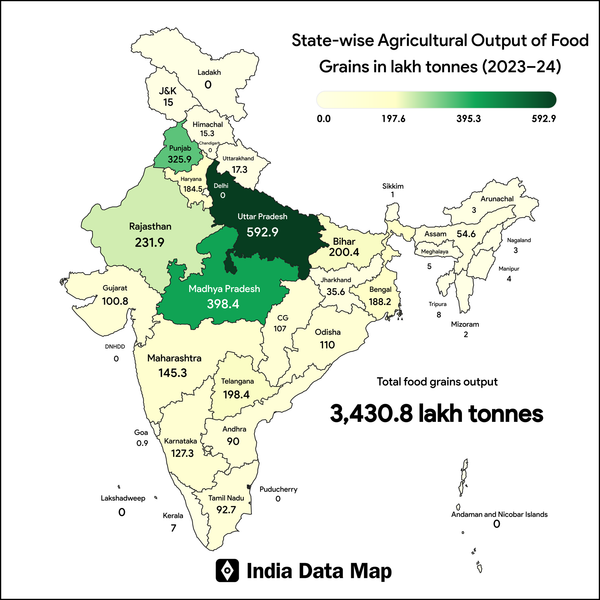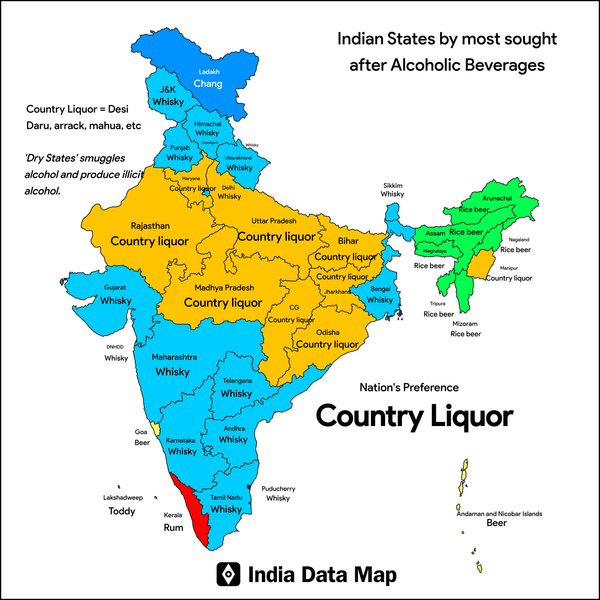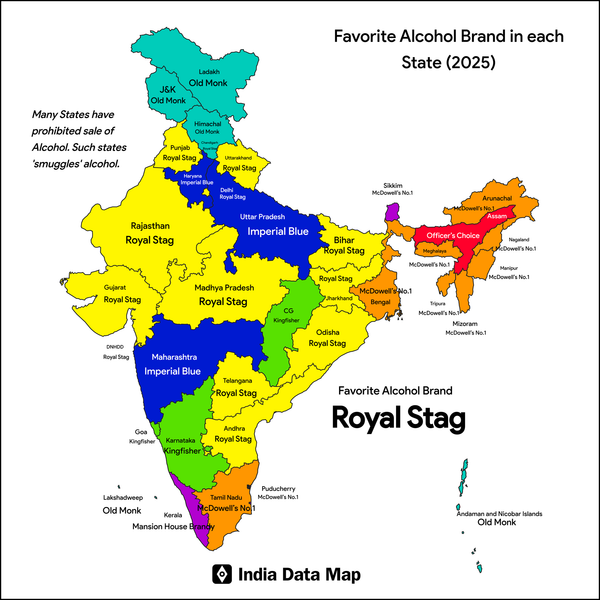Map: Indian States by Rice Production in Lakh tonnes (FY 2023-24)
India’s 2023–24 rice production totals 1,376.97 lakh tonnes, led by Telangana, UP, and West Bengal. Explore key states, regional trends, and low-output areas.
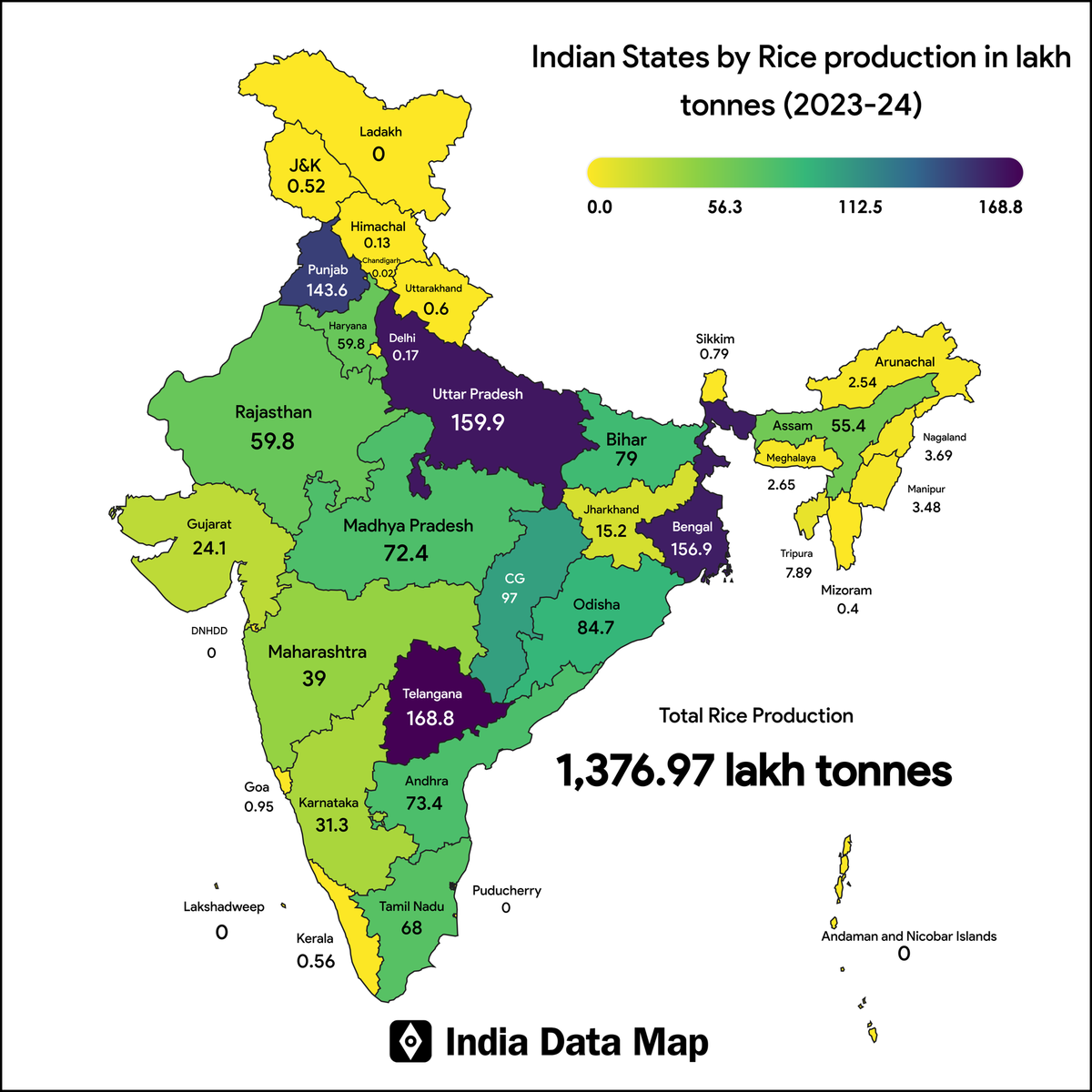
India remains one of the largest rice producers globally, with an estimated production of 1,376.97 lakh tonnes for the year 2023–24. This impressive figure showcases the country's geographical diversity and agronomic capabilities.
| State/UT | Rice Production (lakh tonnes) |
|---|---|
| Telangana | 168.8 |
| Uttar Pradesh | 159.9 |
| West Bengal | 156.9 |
| Punjab | 143.6 |
| Chhattisgarh | 97.0 |
| Odisha | 84.7 |
| Bihar | 79.0 |
| Andhra Pradesh | 73.4 |
| Madhya Pradesh | 72.4 |
| Tamil Nadu | 68.0 |
| Haryana | 59.8 |
| Assam | 55.4 |
| Maharashtra | 39.0 |
| Karnataka | 31.3 |
| Gujarat | 24.1 |
| Jharkhand | 15.2 |
| Arunachal Pradesh | 2.54 |
| Manipur | 3.48 |
| Meghalaya | 2.65 |
| Mizoram | 0.40 |
| Nagaland | 3.69 |
| Sikkim | 0.79 |
| Tripura | 7.89 |
| Goa | 0.95 |
| Delhi | 0.17 |
| Chandigarh | 0.02 |
| Ladakh | 0 |
| Lakshadweep | 0 |
| Puducherry | 0 |
| Andaman & Nicobar Islands | 0 |
| Dadra & Nagar Haveli & Daman & Diu | 0 |
| Jammu & Kashmir | 0.52 |
| Himachal Pradesh | 0.13 |
| Uttarakhand | 0.60 |
| Kerala | 0.56 |
Leading States
Telangana leads the rankings with 168.8 lakh tonnes, closely trailed by Uttar Pradesh (159.9) and West Bengal (156.9). Together, these three states account for nearly 35% of India's overall rice production.
Punjab (143.6) and Chhattisgarh (97.0) also feature in the top five, underscoring the ongoing prominence of traditionally rice-producing regions. Notably, Telangana's swift ascent to the forefront is attributed to significant investments in irrigation and incentives for paddy procurement in recent years.
Regional Patterns
Rice cultivation is predominantly found in Eastern and Southern India, benefiting from monsoon-fed plains and riverine ecosystems.
States such as Bihar, Odisha, Andhra Pradesh, and Tamil Nadu consistently produce solid outputs, each contributing over 65 lakh tonnes.
Northeastern states, including Assam, Tripura, and Nagaland, also engage in rice production, albeit on a smaller scale.
Low-Production Territories
Union Territories and hilly regions — such as Ladakh, Lakshadweep, Andaman & Nicobar Islands, and Puducherry — report either zero or minimal production, mainly due to limited arable land or urbanized economies.
Even major cities like Delhi and Chandigarh exhibit low production figures, as agriculture plays a minor role in their land utilization.
Conclusion
Rice serves as the cornerstone of Indian agriculture and food security. This state-wise overview not only emphasizes the dominance of specific states but also highlights emerging trends, such as Telangana's agricultural growth. The insights derived from this data can guide future policies regarding irrigation, procurement, and food distribution.

